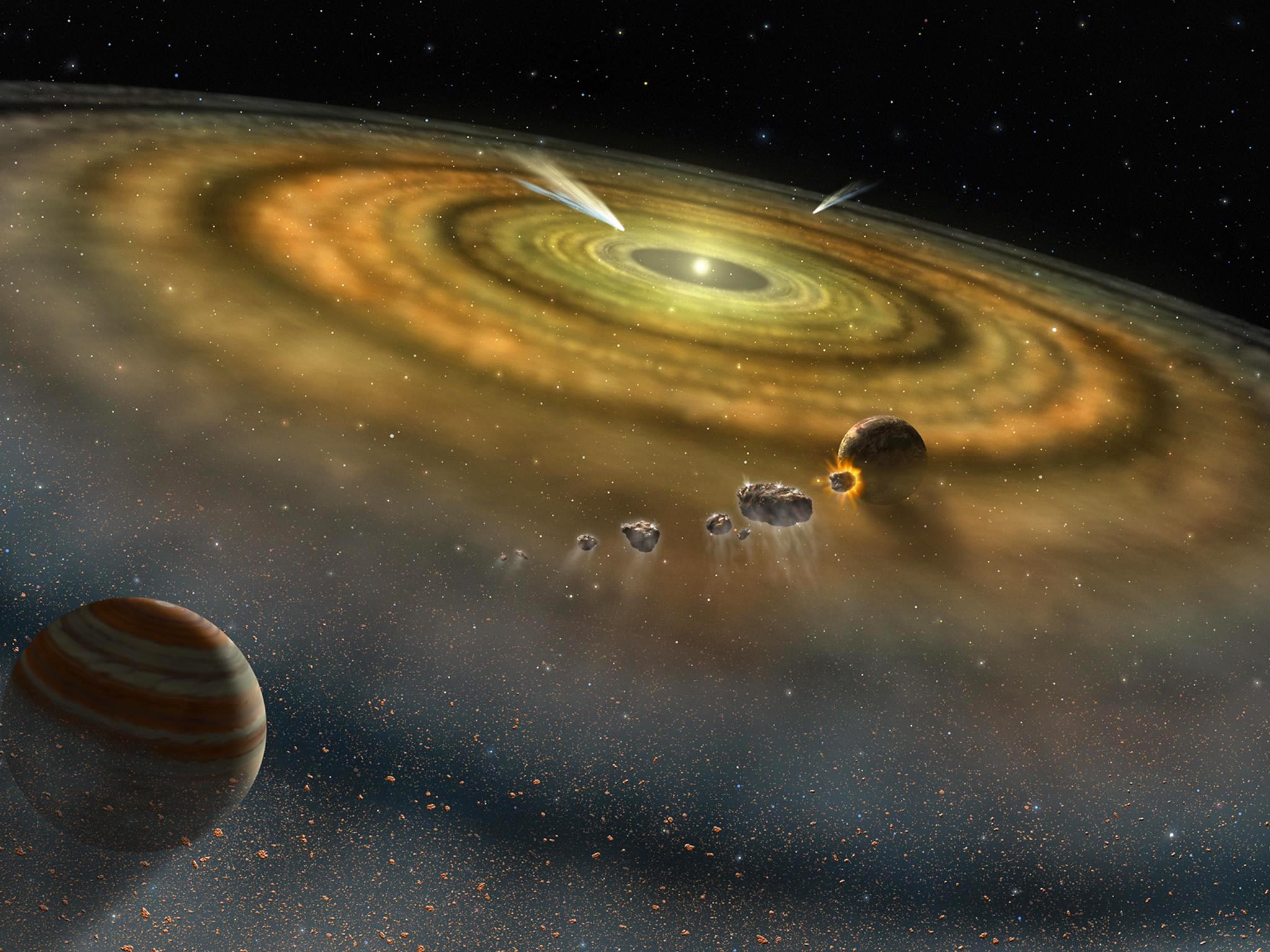Artistic idea of dust and gas surrounding a new planetary system. Photo credit: NASA
A long time ago – about 4.5 billion years ago – our solar and solar systems were formed in a short span of 200,000 years. This is the conclusion reached by a group of scientists from the Lawrence Livermore National Laboratory (LLNL) who examined isotopes of the element molybdenum found on meteorites.
The material that makes up the sun and the rest of the solar system comes from the collapse of a large cloud of gas and dust about 4.5 billion years ago. By observing other star systems that formed similarly to ours, astronomers estimate that it would take a cloud to collapse and a star to ignite likely to take 1 to 2 million years. However, this is the first study that can provide numbers about our own solar system.
“Before, the time frame of formation for our solar system wasn’t really known,” said LLNL cosmochemist Greg Brennecka, lead author of a paper in science. “This work shows that this collapse that led to the formation of the solar system happened very quickly in less than 200,000 years. If we scaled all of this to a human life span, the formation of the solar system would be compared to a pregnancy of about 12 hours instead of nine months. It was a quick process. ”
The oldest dated solids in the solar system are calcium-aluminum-rich inclusions (CAIs), and these samples provide a direct record of the formation of the solar system. These micrometer to centimeter-sized inclusions in meteorites formed in a high-temperature environment (more than 1,300 Kelvin), probably near the young sun. They were then transported outward to the region where carbonaceous chondrite meteorites (and their parent bodies) formed, where they are found today. The majority of CAIs were founded 4.567 billion years ago over a period of approximately 40,000 to 200,000 years.
This is where the LLNL team comes in. The international team measured the molybdenum (Mo) isotope and trace element compositions of a variety of CAIs derived from carbon-containing chondrite meteorites, including Allende, the largest carbon-containing chondrite on earth. Since they found that the different Mo isotopic compositions of CAIs cover the entire range of material that has formed in the protoplanetary disk instead of just a small disk, these inclusions must have formed within the time span of the cloud collapse.
Since the observed period of star accretion (1-2 million years) is much longer than the formation of CAIs, the team was able to determine exactly which astronomical phase in the formation of the solar system was recorded by the formation of CAIs and how quickly the material accreted, of which the solar system is made.
Reference: “Astronomical context of the formation of the solar system from molybdenum isotopes in meteorite inclusions” by Gregory A. Brennecka, Christoph Burkhardt, Gerrit Budde, Thomas S. Kruijer, Francis Nimmo and Thorsten Kleine, November 13, 2020, science.
DOI: 10.1126 / science.aaz8482
The former LLNL scientist Thomas Kruijer (now in the Museum für Naturkunde in Berlin) and researchers from contributed to this study University of Munster, California Institute of Technology and the University of California, Santa Cruz.
The work is funded by the LLNL Laboratory Driven Research and Development Program NASA.



